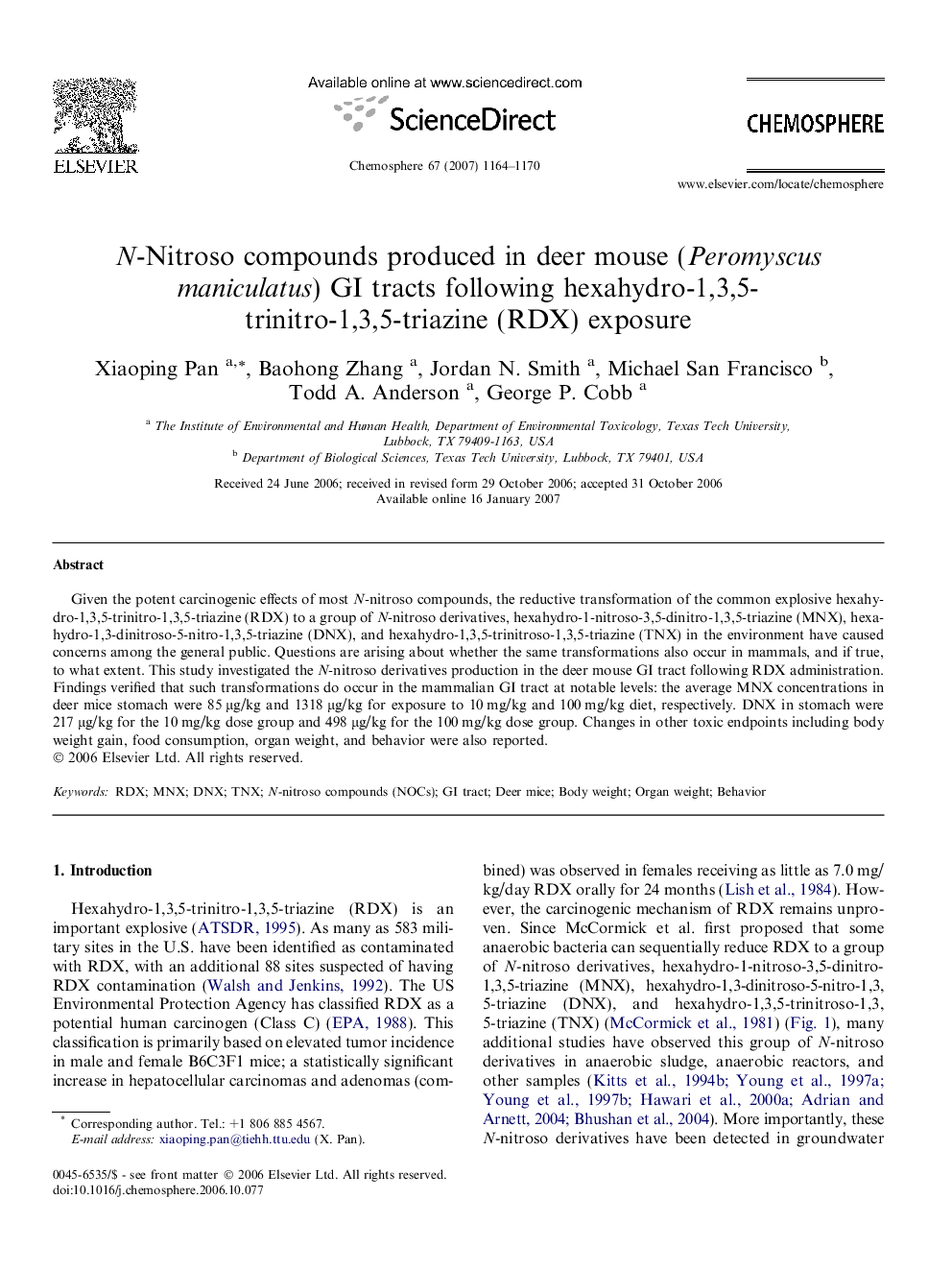| Article ID | Journal | Published Year | Pages | File Type |
|---|---|---|---|---|
| 4415386 | Chemosphere | 2007 | 7 Pages |
Given the potent carcinogenic effects of most N-nitroso compounds, the reductive transformation of the common explosive hexahydro-1,3,5-trinitro-1,3,5-triazine (RDX) to a group of N-nitroso derivatives, hexahydro-1-nitroso-3,5-dinitro-1,3,5-triazine (MNX), hexahydro-1,3-dinitroso-5-nitro-1,3,5-triazine (DNX), and hexahydro-1,3,5-trinitroso-1,3,5-triazine (TNX) in the environment have caused concerns among the general public. Questions are arising about whether the same transformations also occur in mammals, and if true, to what extent. This study investigated the N-nitroso derivatives production in the deer mouse GI tract following RDX administration. Findings verified that such transformations do occur in the mammalian GI tract at notable levels: the average MNX concentrations in deer mice stomach were 85 μg/kg and 1318 μg/kg for exposure to 10 mg/kg and 100 mg/kg diet, respectively. DNX in stomach were 217 μg/kg for the 10 mg/kg dose group and 498 μg/kg for the 100 mg/kg dose group. Changes in other toxic endpoints including body weight gain, food consumption, organ weight, and behavior were also reported.
